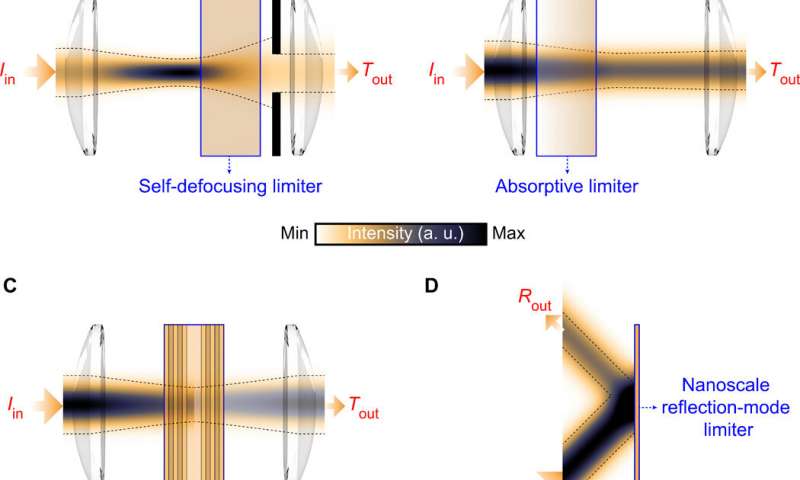In the past several decades, physicists have conducted
deep laboratory investigations into nonlinear optics, plasma
physics and quantum science using advanced high-intensity,
ultrashort-pulse lasers. Increased use of the technology naturally
risked damaging the optical detection systems and therefore they
proposed a variety of optical limiting mechanisms and devices.
Device miniaturization of such designs while maintaining superior
integrability and control can, however, become complex. In a new
report, Haoliang Qian and a research team in electrical and
computer engineering, materials science, chemistry and the Center
for Memory and Recording Research at the University of California,
San Diego, U.S., detailed a reflection-mode pulse limiter. They
engineered the device using nanoscale refractory films made of
aluminum oxide and sandwiched titanium nitride (Al2O3/TiN/Al2O3) to
build the metallic quantum wells (MQWs). The quantum size effect of
the MQW provided large and ultra-fast Kerr-type nonlinearities.
Functional multilayers containing these MQWs will find new
applications in meta-optics, nanophotonics and nonlinear optics,
and the results are now published on Science
Advances.
Nanoscale optical pulse limiter facilitated by refractory
metallic quantum wells




